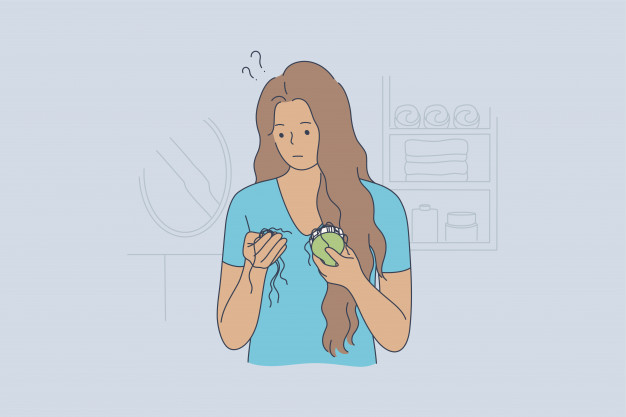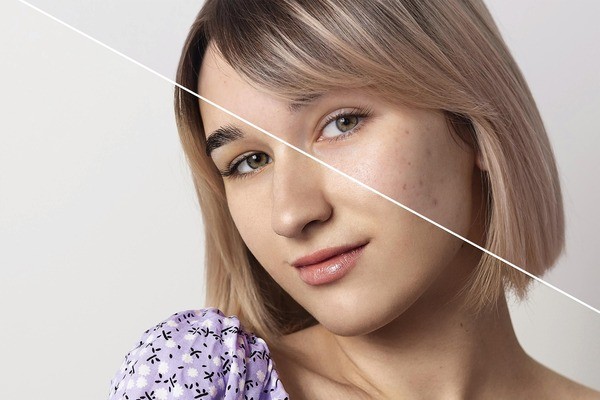
PRP Treatment for Hair
Thinning hair is a problem that both men and women face at some point time. While there are several external factors that may impact hair loss; with age, there is not much that can be done to prevent hair from thinning or balding. However, there are many medical as well as cosmetic treatments that patients can undergo to restore hair growth or to fix a receding hairline. Apart from the popular surgical method of hair transplantation, a non-surgical, less invasive and cost-effective procedure for hair loss is the (Platelet-rich plasma) PRP Treatment for Hair. This option is also better for patients who are poor candidates for hair transplant surgery.
PRP (platelet-rich plasma) therapy is a hair rejuvenation and restoration procedure in which injections of concentration of a patient's own platelets, derived from blood, are used to treat hair loss problems. Plasma is the part of whole blood that contains proteins and cells throughout the body. The Plasma that is especially rich in platelets is used because it helps stimulate the activity of the hair follicles thereby promoting new hair growth.
Platelets are colourless components of blood that prevents blood flow from the blood vessels, during a cut or wound. It helps the body to form clots that further helps to stop bleeding. This is why platelets are also called the body’s “first responders”, that respond and react first to stop the bleeding from that area by regrowth of cells that cause healing.
Scientists realised that if they could apply the same method and extract concentrated platelets containing growth factors and proteins from the blood to inject them into damaged areas of the body, that could produce cell growth and accelerate healing.
Hence, PRP treatment is also used to treat a range of health issues and accelerate the healing of internal injuries in ligaments, muscles and joints.
Platelet-rich plasma (PRP) is essentially a concentration of platelets suspended in a relatively smaller amount of plasma through centrifugation, where red blood cells are separated. However, this treatment is typically used when hair loss has resulted from androgenetic alopecia. It is a common condition in both men and women that causes hair follicles to shrink along with well-defined signs of receding hairline and balding.
Currently, there is not any sufficient scientific data available regarding the beneficial results of platelet-rich plasma in the clinical procedure. However, this therapy still stands to be in use since a number of years and has been giving positive results for many people as well. This has no negative side effects as it is a natural procedure where a patient's own healing system is used to treat or restore growth in cells.
How is the procedure carried out?
It is important for you to know about any medical procedure if you are planning to go for it. As with most procedures, a systematic step-by-step pattern is followed in order to perform this surgery.
To produce PRP, a medical professional draws blood from the patient's body, typically from the arm and collects it for the centrifuge. This is an equipment used for the separation of fluids of different density. This machine works by spinning at a rapid rate and dividing the components of blood.
After a few minutes of the blood preparing in the centrifuge, it forms three layers of different density. They are namely- platelet-poor plasma, platelet-rich plasma and the red blood cells.
The PRP is extracted using a syringe and injected into targeted areas of the scalp, where hair loss patterns have been located.
The entire process usually lasts an hour, and several sessions may be recommended by your doctor. After receiving PRP treatment, a person can immediately return to their regular activities without any limitations. However, some post-treatment measures may be suggested, depending upon your skin sensitivity or other problems.
How long does it last?
PRP is not a cure for the condition that primarily caused you the hair loss. Hence, multiple PRP treatments can be asked to receive after your initial therapy to maintain hair growth results. The doctor would recommend you accordingly, for how often you need to have PRP therapy. It will also vary from 3-6 months, depending on the results of your initial treatment.
The most popular medication that doctors commonly use to treat androgenetic alopecia is topical minoxidil. The PRP Treatment works the same way as medicine like this works, in the sense, that it has temporary results and needs a constant investment of time and money.
Are there any risks and side effects?
As you may have understood by now, PRP treatment for hair involves injecting your own blood into your scalp. By this, you are making sure that there aren’t any foreign risk factors of getting a communicable disease.
However, it is essential to note that you must report to your doctor before signing up for the treatment, about any medications or supplements you are on.
Notably, any therapy that involves injections possess some amount of risk and side effects such as injury to the blood vessels or nerves and scar tissue etc.
There are chances that you could have a negative reaction to the anaesthetic used in the treatment process that can cause skin reactions. Some general side effects that most patient face after their first injury include:
- Mild pain at the injected site for a few days
- Scalp tenderness
- Swelling in the injected area
- Mild headache
- Itching at the treatment site
- Temporary bleeding at the site
Avoid going for PRP treatment for hair loss if you are:
- on blood thinners
- a Chain smoker
- alcoholic or have a practice of drug use
- diagnosed with cancer
- diagnosed with Chronic liver disease
- diagnosed with Chronic skin disease
- suffering from a metabolic disorder
- on low platelet count or have platelet dysfunction syndrome
- a thyroid patient
Are you an ideal candidate for PRP Treatment?
The best way to determine for you, whether you are apt for a PRP treatment, is to book a consultation with a well-qualified doctor. An experienced hair loss and restoration medical professional will be able to determine the cause of your hair loss and come up with a treatment option, that is specific to your hair loss or hair thinning problem.
However, there are certain conditions that support your candidacy for PRP treatment for hair loss. You must go for the therapy only if,
you have thinning hair but not any significant pattern of hair loss or balding.
you are ready to invest your time and money in multiple treatment sessions.
you want to enhance the results of a hair transplant surgery done in the past.
If you are dubious about PRP treatment for your hair loss pattern, considering that it is less invasive and stands to be uncertain for balding and severe cases, you may go for a hair transplant procedure. Make an appointment now at Dr VS Rathore clinic- the best hair transplant clinic in Kolkata. Our clinic is highly reputed and continues to be the choice of many patients for more than 18 years. Visit our website for more information.







